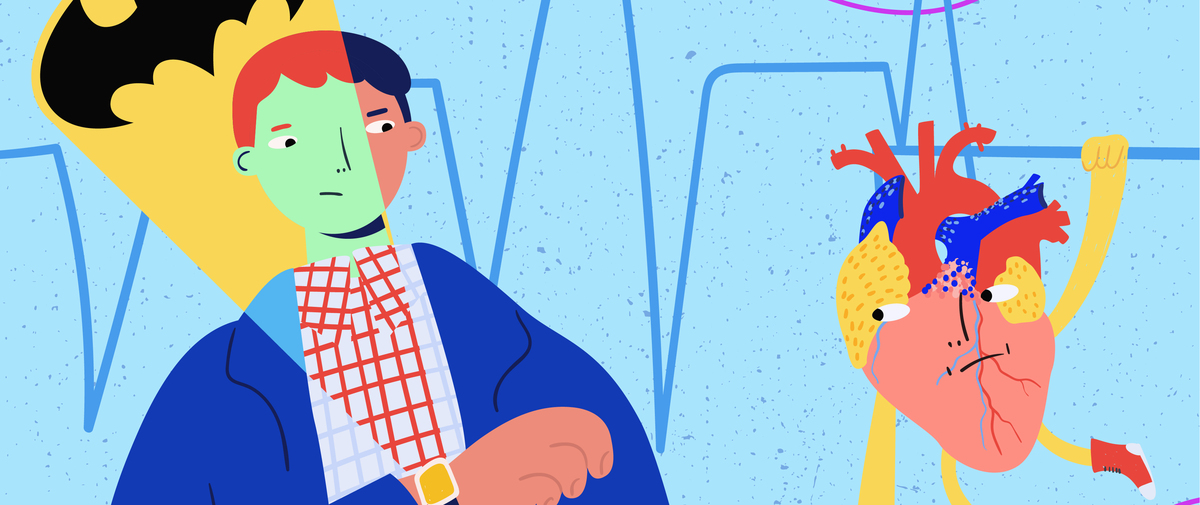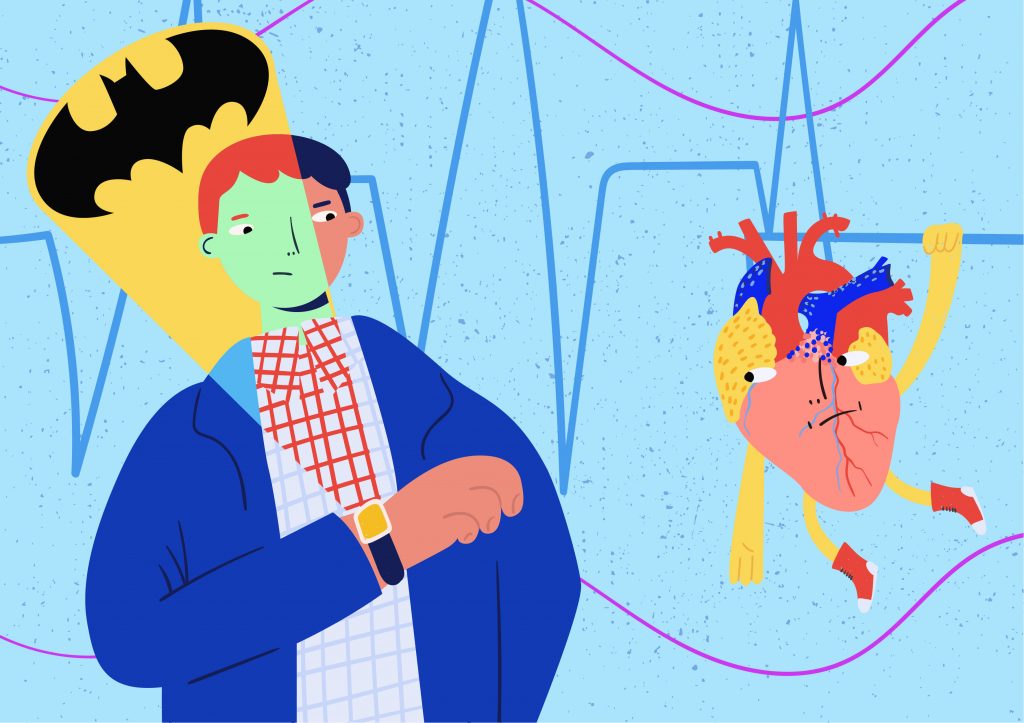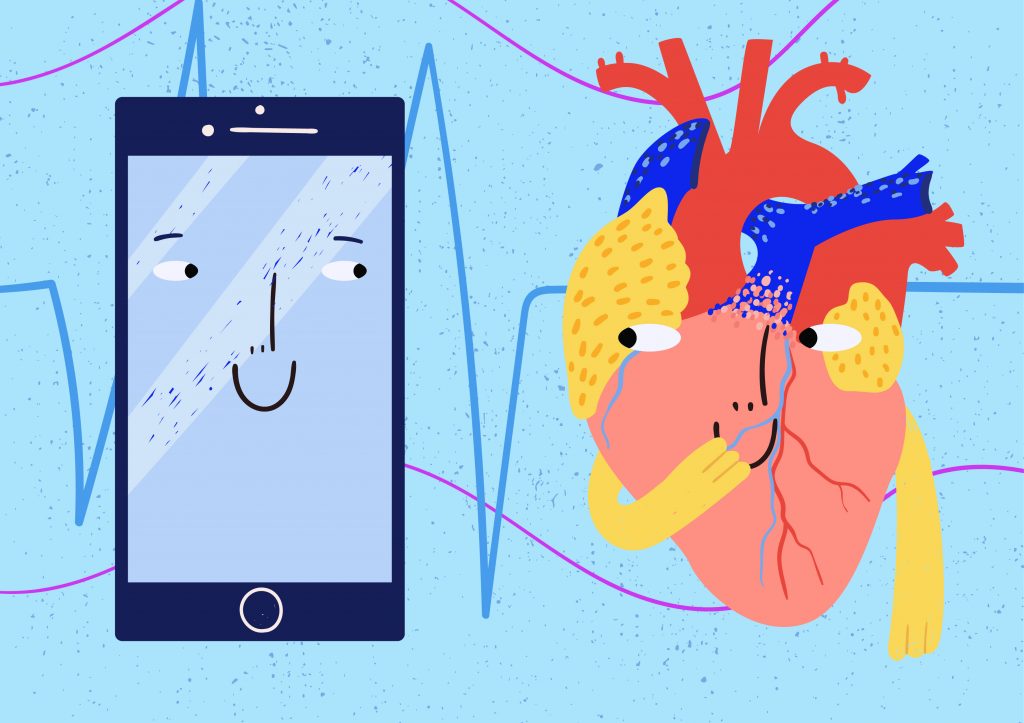How Technology Helps Save Lives: Smartphones, Wearables, and Voice Assistants

The outbreak of the highly contagious COVID-19 brought at least one positive change to our lives: health checks have become far more common in most places. From shopping malls to airports, people have grown more cautious about their health and hygiene. And while numerous problems manifested themselves in the healthcare industry, new solutions have emerged as well. For example, coronavirus tracking apps are tracing the virus journey to help limit its spread and even monitor whether users have been in contact with infected people. A mobile phone is not only our companion in shopping, games, keeping fit, dating, or learning. Nowadays, cell phones save lives, albeit indirectly.
In this article, we will look at some prominent examples of mobile, IoT, and other modern technology saving lives.
How Technology Helps Save Lives Every Day
Wearables: Monitoring Health
Today, news and stories on how a fitness watch saved a life are all over the Internet. Fitness trackers and some smartwatches are equipped with trackers that collect and analyze various data. By detecting irregularities, these devices can spot some health issues in time, potentially saving wearers’ lives.
For example, Fitbit smartwatches and fitness trackers let users track their heart rate and collect their data through the app for mobile devices where users can access it easily. Through the Fitbit app, it is possible to detect if the user’s heart rate is irregular, which under professional examination and CT scans may reveal a serious heart condition like blockages in blood vessels or cardiovascular disease. Can Fitbit warn of a heart attack? Sadly, not yet. If a user doesn’t pay attention to the heart rate changes, Fitbit serves only fitness tracking goals.

Despite having a different core goal, Apple Watch Series 4 or later has an electrocardiogram (ECG) feature which allows users to check their heart rhythm. Thus, conceivably, Apple Watch saves a life by discovering atrial fibrillation, a heart rhythm disorder, so it can be addressed as early as possible.
Sure, data from fitness trackers and smartwatches can’t be completely comprehensive. An Apple Watch user can track just one aspect of a heart rhythm whereas regular medical ECG tracks up to 12 aspects.
But even the typical indicators monitored by popular fitness trackers can be used to detect possible health issues. If unusual, quick weight loss is spotted where it shouldn’t, it may be a sign of diabetes or cancer. Weight gain can be a sign of sodium overconsumption, but also might be a symptom of kidney disease or congestive heart failure.
Emergency communication devices are a special category of wearables. They are developed keeping in mind elderly and physically disabled people. They usually comprise a wearable emergency device, a watch or pendant, and a high-output speaker with an ultra-sensitive microphone (a smartphone can be used instead of one of those). Some companies also have bundles with an in-car medical alert, which also has means for clear and fast two-way communication, that can detect a crash and monitor vehicle location.
Smart Voice Assistants: Modern Lifeguards
Voice-based smart assistants made Googling even easier than before, which is especially good in situations where a person can’t use their hands. According to a University of Alberta study, virtual assistance can provide adequate first aid and life-saving information, although there are still some limitations.
Apple’s assistant, Siri, has the advantage of the built-in ability of the operating system, so Siri offers to call emergency services and provided addresses to the nearest healthcare institutions. It is a default function and even if the user said ‘Siri, call 911’ by accident, a countdown begins allowing cancellation of the call. For example, in December 2019, Gael Salcedo got stuck in his car in the middle of an icy river. The young man could not even find his iPhone. He managed to wake the voice assistant, though, and Siri called 911.
Hopefully, this is not the last time Siri saves a life. The voice assistants’ potential for activating emergency response is great, especially since they become more common and follow users in their smartphones, cars, homes, and offices.
According to the study mentioned earlier, Amazon Alexa’s rate of query recognition was 98%, and Alexa medical alert system was triggered in 46% emergency queries.

There are various Alexa life alert skills that can help in situations where users need help but cannot reach the phone or press a button. These skills require a voice request to trigger Alexa to call for help. Usually, there are special phrases like ‘Alexa, I’m hurt’ or ‘Alexa, someone’s in my house.’ Some skills will send an alert to phone numbers that the user-programmed in the skill and some have special agents that work 24/7, so emergencies won’t be missed.
Some senior care companies, such as Visiting Angels, are leveraging Amazon Echo Dot to be a constant companion, a caregiver for seniors, and a voice-activated medical alert. The primary benefits of the digital companion are:
1. Emergency communication. Elders tend to struggle while using mobile phones or other modern communication devices, so the whole system is voice-activated. It’s possible to pre-install into the system the phone numbers of everyone the elder can rely upon.
2. Critical care response. Emergency response works day and night.
3. No need for wearables. Elders can struggle with using wearable devices too and sometimes even forget they are wearing them, which makes wearables unreliable if emergency issues occur.
Smartphones & Apps: Emergency Features
Nowadays, it is possible to reach almost any healthcare specialist using a mobile application. Some of them have emergency options, so users now can access comprehensive healthcare assistance in seconds.
Both Apple and Google offer a lot of useful apps allowing users to monitor issues that may arise. For example, Instant Heart Rate requires no special sensors or additional devices. The app uses the phone’s camera and a flashlight to track the heartbeat.

The iPhone’s smart assistant is slightly more useful than Android’s since Siri can actually share data on where an emergency call was made. Probably, the iPhone saves a life more often than its counterparts because it also has an Emergency SOS feature for situations where the user cannot pull out a phone to make a call. This feature is extremely helpful in dangerous situations like assaults, where the health and life of people are threatened. Emergency SOS lets users notify the authorities of an emergency and also blocks the phone entirely so that theft or undesirable actions will be impossible. To use the feature on iPhone Series 7 or earlier, users need to tap the lock button 5 times; a slider will pop up on the screen. It is also possible to set it on Auto Call after 5 taps. To call for an emergency discreetly using iPhone Series 8 or later, owners need to press and hold the upper volume and the lock buttons and hold it until emergency services will be called.
Another potentially life-saving Apple feature is the in-build Medical ID that allows users to store their emergency information on their mobile devices. After filling the information, they can select the option “Show when Locked” and create a small icon visible on the left bottom corner of the lock screen. Thus medical staff or people who provide first aid can access this data without entering a password.
Old-school Emergency Communication Devices
Some local public health agencies to this day are taking advantage of two-way transmissions over radio frequencies. It is called amateur or ham radio and can be used as backup emergency communication. The logic behind using such ‘outdated’ technology is simple: an Internet connection can fail, phone lines can fail, and electricity too. An emergency won’t wait for a convenient moment to occur. Satellite phones can also be used as an alternative, but ham radio is much more reliable, stand-alone, and allows communication in real time.
The Takeaway
The pandemic has shown humanity how fragile our health and well-being is. It’s still vital to know what to do in an emergency or in dangerous situations. From the older ham radio to Alexa medical alert skills, any technology that can help save lives should be considered an eligible option.
It’s worth exploring further how technology helps save lives, especially if it is not specifically healthcare-related. Many people still don’t realize the full potential of their smartphones or fitness trackers and overlook all the benefits of cutting-edge technology they can glean.
If you have any questions or ideas, please don’t hesitate to contact Alternative-spaces. Together we can devise a meaningful solution!
Content created by our partner, Onix-systems.
 Home
Home